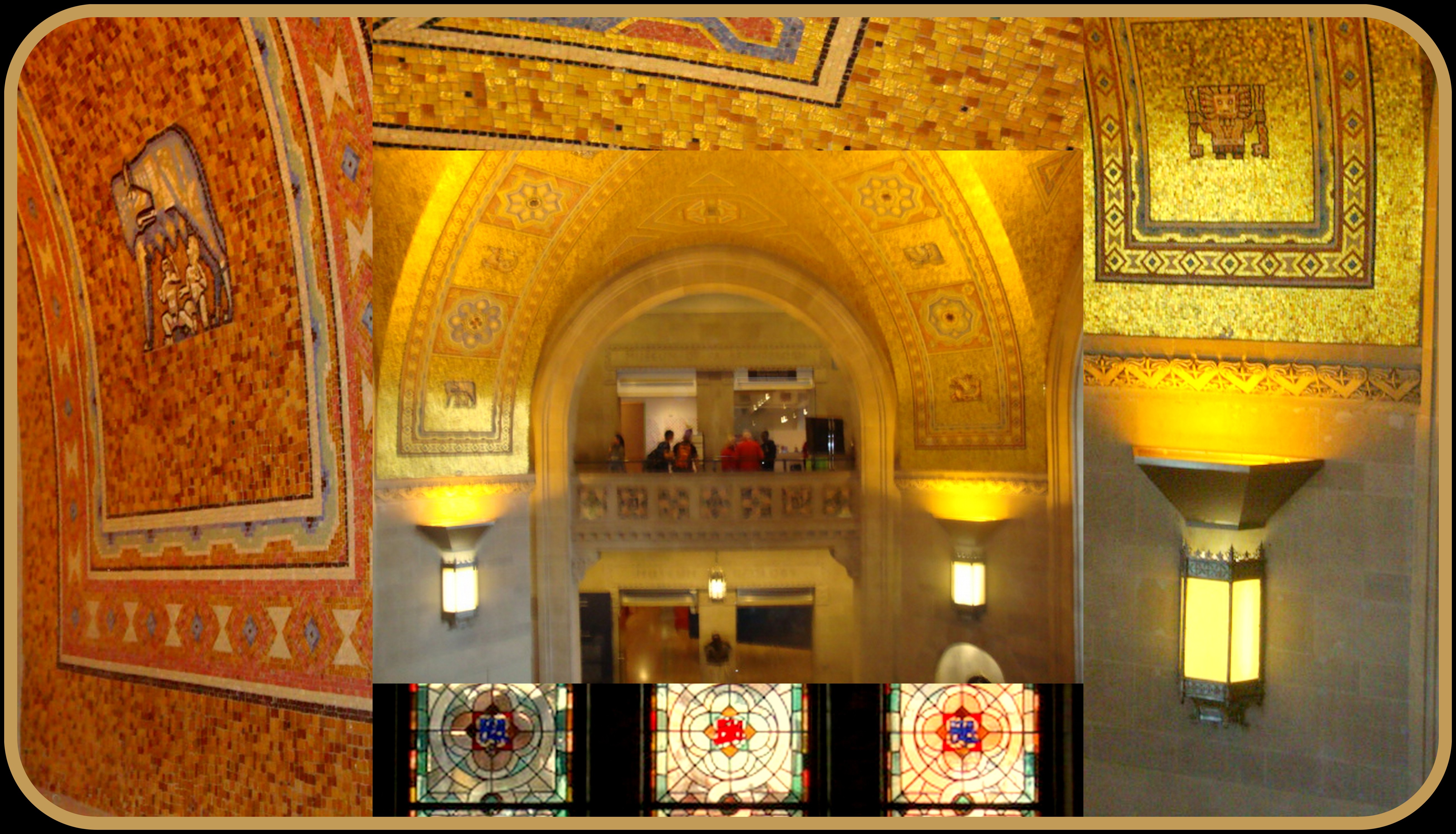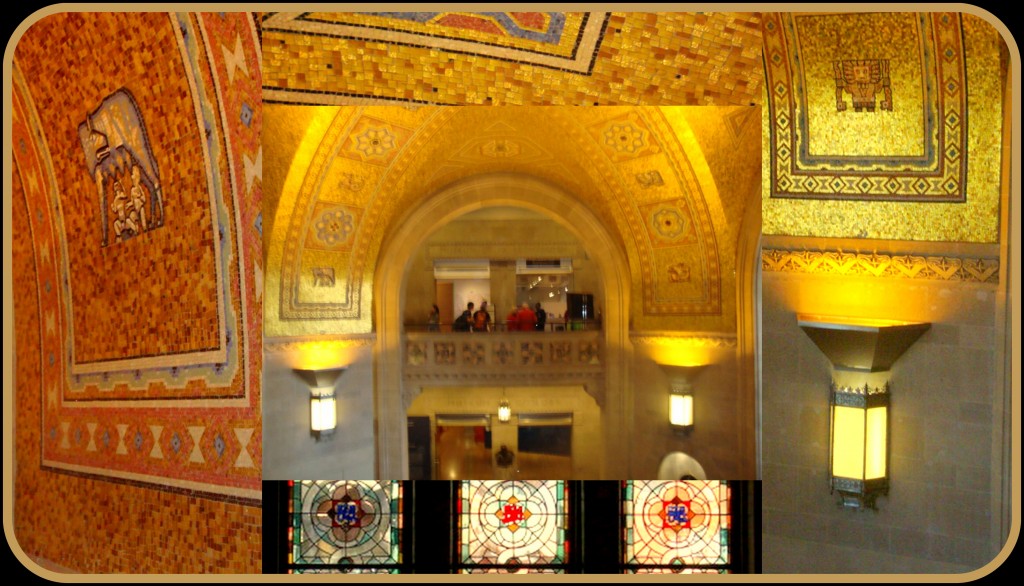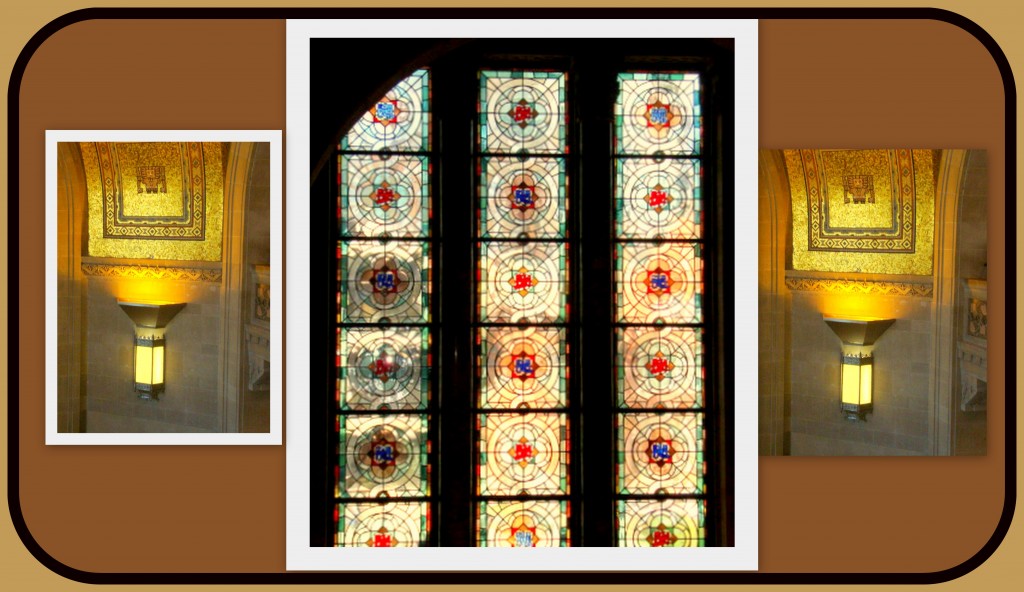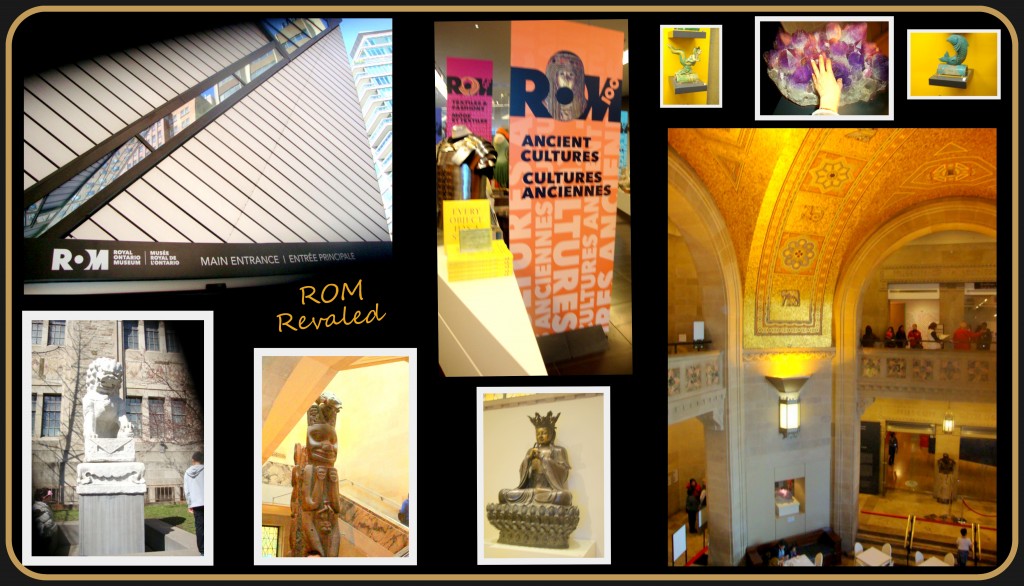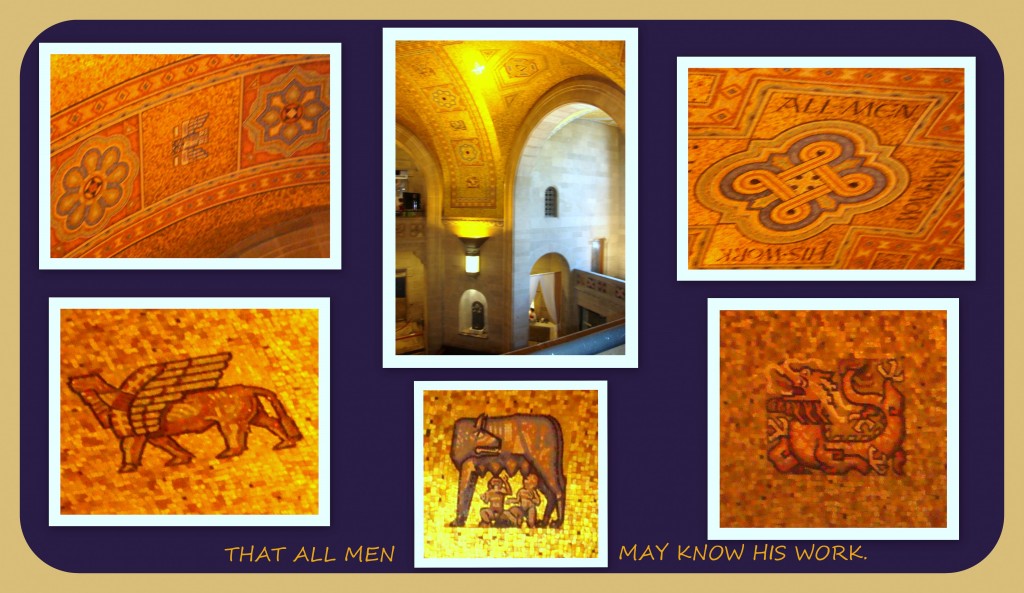
Toronto’s ROM is celebrating 100 years. It first opened in March 1914 and throughout 2014 will be celebrating this milestone anniversary in grand style. On May 3rd and 4th, they opened their doors to the public for ROM Revealed and I was there with many others to be part of this wonderful event. “ROM Revealed offers a rare opportunity to go behind-the-scenes and explore the areas of the Museum traditionally not open to the public, including the ROM’s DNA lab, its collections vaults, antler room, its 6 floors of Curatorial Centres and much more.”
The Rotunda area is an amazing space to be in and the ceiling is out of this world. I took many images that day and hope you enjoy the ones here in this post that I’m sharing with you. As the old saying goes – “a picture is worth a thousand words.”

Druxy’s has a ROM cafe in the Rotunda area and is a lovely place for something to eat and drink. My pictures just show parts of the ceiling and give a general idea of the area. You really have to be there to see all of it.
There’s a lovely set of stained glass windows in the Rotunda area and this just gives an idea of how beautiful they really are and how they enhance the ambience there.
My last collage is a kind of hodge-podge of what I experienced that day. Hope you enjoyed this post!
Encyclopedia Britannica’s information on rotunda: rotunda, in Classical and Neoclassical architecture, building or room within a building that is circular or oval in plan and covered with a dome. The ancestor of the rotunda was the tholus (tholos) of ancient Greece, which was also circular but was usually shaped like a beehive above.

